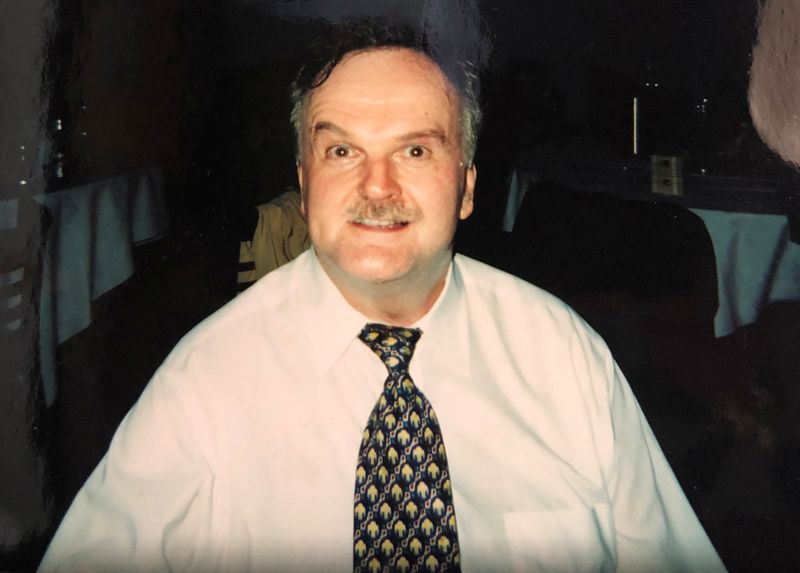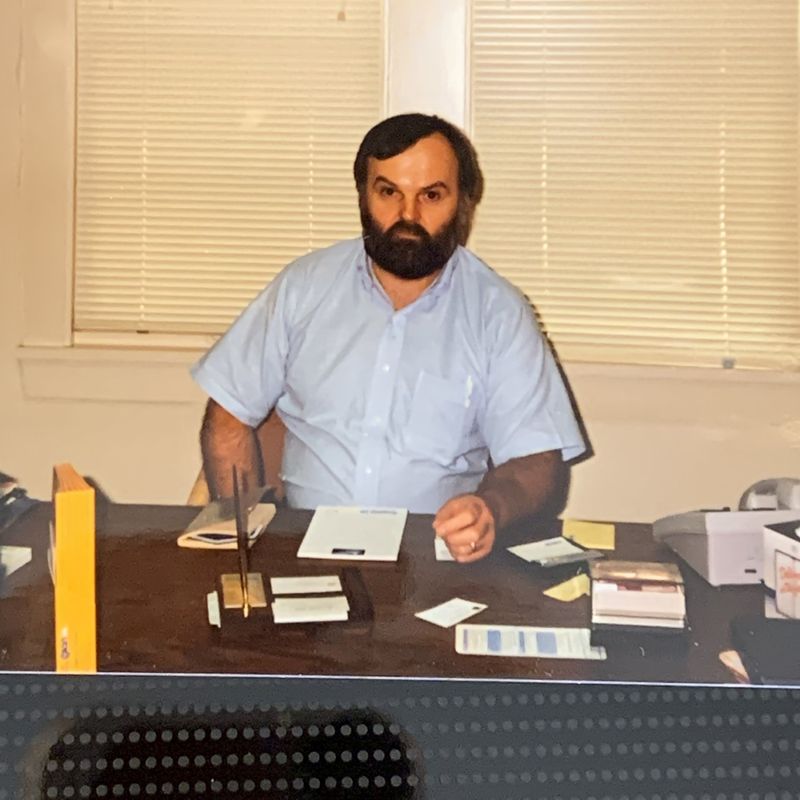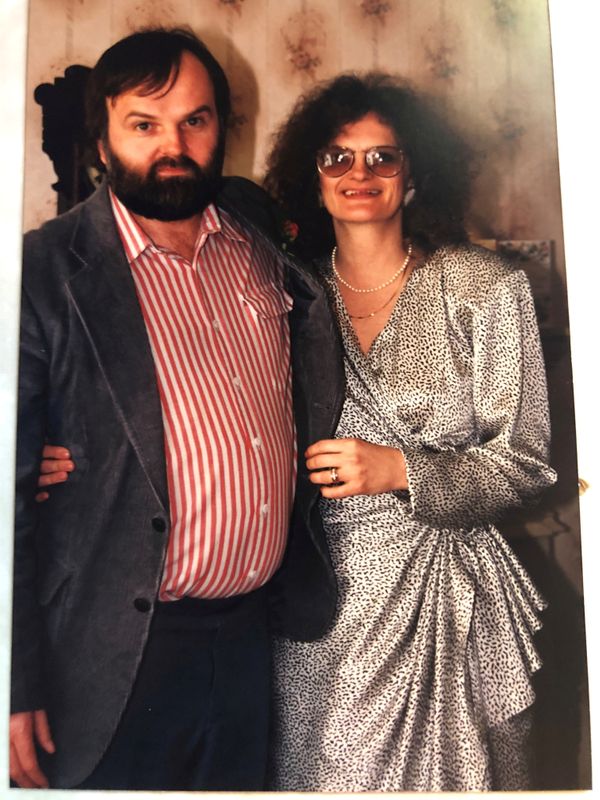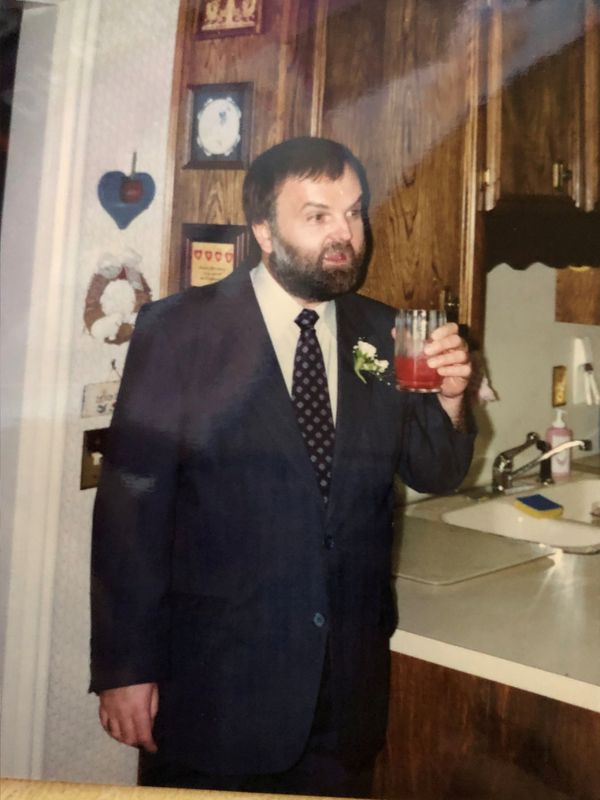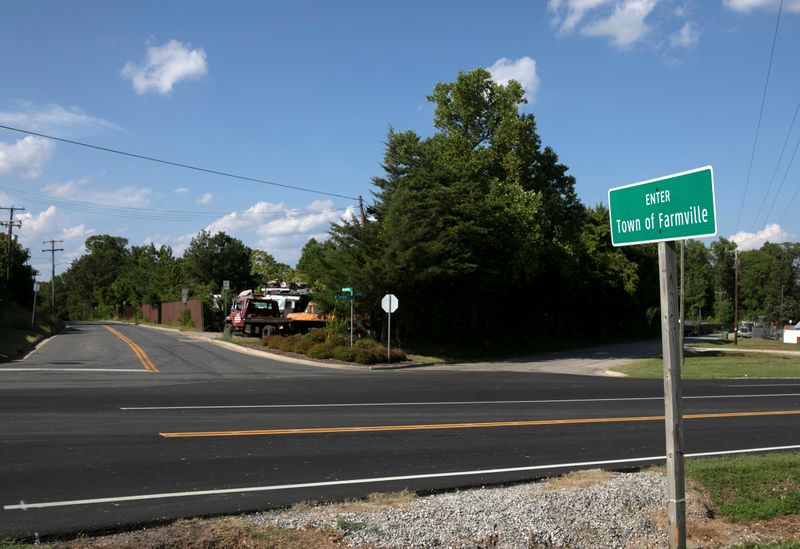NEW YORK (Reuters) – James Hill often told his family he just wanted to live moment to moment, like a Buddhist monk. He said it was the only way to survive 14 years in prison after being given a sentence he believed was unjust. But as his release date neared this spring, his nieces and nephews started encouraging their 72-year-old “Uncle Jim” to start thinking about the future.
During his years in prison, Jim had refused visits because they would be too painful, reminding him of the life he had left behind as a family doctor in Louisiana. But as the months ticked closer to the end of his sentence for healthcare fraud and distributing controlled substances, including OxyContin, his family convinced him that a visit could be the first step toward what his nephew Doug Hunt liked to call his “new life.”
“In our minds, now was the time to start prepping emotionally for him to say, ‘OK, yeah, we’re here, this is real,'” said Doug’s brother, David. They and some of their cousins have kept in close contact with their uncle over the years, especially after Jim’s surviving siblings died while he was in prison.
When David and his sister arrived in the heavily guarded visitation room at Rivers Federal Correctional Institute in North Carolina in December last year to see their uncle for the first time since his imprisonment, they were told that no touching was allowed.
“As soon as he got within a foot of us, we said the hell with it and we both hugged him together and didn’t let go for 15 minutes,” David said. “We weren’t supposed to do it, but the guards just let it go,” granting the elderly prisoner some leeway.
Soon they were all reminiscing, and Jim was cracking jokes. “We thought we might be going there to try and heal him, but it was not that way – he was healing us.”
After the visit and the subsequent phone calls, Jim started feeling hopeful about getting out, David said. The family converted the basement in his late sister’s house to a little apartment with its own bathroom and kitchen area with a microwave and small fridge so that he would have a place to call his own. They pooled their resources to gather everything he would need: clothes, shoes, a computer, even a wallet. They started making plans to see baseball games, take bike rides, go sailing.
Then came the day he finally left prison. April 15.
But there was a problem. Jim wasn’t a U.S. citizen. He was a Canadian with a green card, which had allowed him to practice medicine in the United States. Instead of immediately returning to his home country upon his release, as he had hoped, he was shackled and transferred to a U.S. Immigration and Customs Enforcement (ICE) detention center in Virginia to await an official deportation order from a judge.
An ICE spokeswoman said an order to transfer Jim to immigration officials, known as a “detainer,” was issued in his case in 2017 and a copy of those orders are provided to federal inmates.
But his nephew Doug said Jim still didn’t think he would be taken into an ICE detention center. “He didn’t realize that was going to happen,” Doug said. “He was a free man and still a prisoner.”
PAIN MANAGEMENT
Jim was in his 20s and the single father of two children when he decided to go to medical school at the University of Toronto, according to one of his daughters, Verity Hill. Saddled with thousands of dollars in student loans after graduation, he answered the call of recruiters looking for doctors and nurses to move to communities in the United States, said nephew Doug. Jim had two more kids with a second wife, but they split up and she returned to Canada when the children were small, Doug said.
Jim was practicing as a family doctor in Shreveport, Louisiana, in 2006 when a warrant was issued for his arrest. A patient claimed she paid $100 for an office visit but received a prescription for narcotics from Jim’s office manager without being examined, according to an affidavit from an FBI agent supporting the warrant.
A subsequent indictment charged Jim with 80 counts of distribution of controlled substances for signing prescriptions for at least two dozen people without “a legitimate medical purpose,” and 32 counts of healthcare fraud for overbilling health insurance companies, according to court documents. The indictment also said Jim had improperly backdated a prescription. Prosecutors later alleged that the patient who received that prescription died more than a year later from an overdose of medications.
Jim, who had been in Canada, came back to turn himself in, thinking it was all a misunderstanding that would soon be resolved, according to his family members and letters he wrote at the time. He said his only goal was to ease his patients’ pain. His attorneys planned to introduce expert testimony that would say his prescriptions were medically appropriate and that he couldn’t be held responsible for patients’ abuse of narcotics, court documents showed.
“I have committed no crime. I will be fully exonerated,” Jim wrote Doug from prison on April 3, 2006. “As you said, strange places can sometimes provide a fulcrum for great changes. Right now I’m being small and still and letting breath carry me through the tenses while trying to melt into now.”
But Donald Washington, the U.S. Attorney for the Western District of Louisiana, had a different view. Washington said in a press release the case demonstrated how “even medical doctors can become common criminals.”
By the end of 2006, after months in jail, Jim decided to plead guilty to one count of healthcare fraud related to improperly billing for office visits and one of distributing a controlled substance. On Christmas Day 2006, he wrote to his niece Jessica Marostega saying he had come to believe it was wise to take the deal because juries were unpredictable and the judge had partially limited what the expert witness could say in court. “Thus, in the balance of things, I acquiesced,” he wrote to his niece, who goes by Jess.
“I am being depicted in the local newspapers and television as a despicable common criminal and yet believe it or not, I feel blessed,” he said in the letter to Jess. “Within each shell of anxiety and discord there is a seed of peace and grace,” he wrote, signing off, “May the true spirit of Christmas penetrate your bones … and warm you from within when the world is cold.”
With no prior criminal record, Jim thought his sentence wouldn’t be that long and told his family he expected to be home by late 2008 or early 2009.
Instead, U.S. District Judge S. Maurice Hicks decided to sentence Jim, who was 59 at the time, to more than 16 years in jail. At the time of the sentencing, Hicks said that Jim’s explanations for his actions were “little more than a low grade of baloney.” Contacted recently, Hicks and the U.S. Attorney’s office in Louisiana that prosecuted the case said they had no comment on the matter.
Randal Fish, one of Jim’s attorneys, said he was “floored” by the sentence. “It was an easy political move. They wanted to make a statement about doctors prescribing pain medication,” Fish said. “This guy was not a citizen, it was easy to hammer him, and it was just truly unfortunate.”
“THESE FOUR WALLS”
In 2012 and then again in 2015, the U.S. Justice Department denied Jim’s requests to be transferred to Canada because his long residency made him a “domiciliary” of the United States, according to family members and a copy of a denial letter. The Justice Department said it could not comment on international transfers because of privacy reasons.
With dwindling hopes of release, he tried to adjust to life in prison. The early years were hard.
“These four walls close in sometimes and the noise is unbelievable,” he wrote Jess in June 2006.
After he said he had been transferred to a different federal prison, he wrote Jess again in May 2007: “The food here is disgusting,” complaining of a serious salmonella outbreak. “A food worker told me the fish patties served are labeled ‘not for human consumption.’ It is apparently used to feed dolphins who are trained by the U.S. military in the Persian Gulf to hunt for sea mines. Maybe I’ll become as smart as a dolphin and learn to communicate using sonar!”
“I am just taking one breath at a time during this period of adaptation,” he said in the letter. The Federal Bureau of Prisons declined to comment.
He tried to focus on the positive. He had access to a small library and a few courses such as leather-crafting and guitar, he wrote in the letter. Over the years, he deepened his interest in Eastern medicine, wrote drafts of books on wellness and would help other prisoners with acupressure or simple advice on how to eat better to help control diabetes or other chronic illnesses, nephew David said.
When Jim finally agreed to a visit as his sentence neared its end, David was worried that his uncle would have a hard time seeing loved ones after so long, but he was amazed at his attitude.
“Jim didn’t seem like a broken man,” David said. “He had enthusiasm for life.”
HIGH RISK
Just as Jim began to emotionally prepare for his release and return to Canada, the coronavirus began spreading across the globe.
By the time he was transferred to the Farmville immigrant detention center in mid-April, the protocol was to quarantine him for 14 days. According to ICE guidance issued on April 10, all new detainees were supposed to be evaluated to see if they were at higher risk for serious illness from COVID-19, including if they were 65 or older. The ICE spokeswoman didn’t respond to a question about whether Jim was evaluated and said only that he was subject to mandatory detention.
As soon as Jim was moved out of isolation and into general population, he called his family in a panic, they said. He was terrified about catching COVID-19 in the communal dormitories, where more than 80 detainees were packed together, sleeping on bunkbeds. At one point, he stopped eating to avoid going to the crowded mess hall and would try to sleep when everyone else was awake and stay awake at night to limit his interactions, his nieces and nephews said.
On May 3, his family wrote an urgent message to the Canadian Embassy in Washington, D.C., requesting assistance deporting Jim as soon as possible.
The consulate responded that it had been in touch with ICE to express concerns about Jim’s risk factors and advanced age, but said the process of issuing his travel documents and passport could begin only once he had an official order of removal from a U.S. immigration judge.
A judge issued the deportation order on May 12, according to the Executive Office for Immigration Review, which runs the immigration court system. Then the process of obtaining Jim’s travel documents began.
On June 2, ICE transferred more than 70 detainees into Farmville from Florida and Arizona. More than half of the transferees ended up testing positive for the coronavirus.
Within weeks, the center would be engulfed with cases, and nearly every detainee would be infected with the virus.
The delays were mystifying and infuriating for some of Jim’s family.
“Ironically, most of the people in there were trying to stay in the United States, whereas my uncle wanted to get the hell out,” Doug said. “It’s like this perfect storm of things and we are all going, ‘This can’t be happening – the guy is like a week away from getting out of there.'”
By mid-June, ICE had received Jim’s travel documents, according to emails between his family and Canadian consular officials. By then, there were dozens of confirmed cases of COVID-19 at the center and the detainees were getting increasingly agitated. Jim was told his flight home was scheduled for July 9.
On July 1, after a disturbance among detainees, guards shot OC pepper spray into the dorm where Jim was being held. Though he said he received significant exposure to the chemicals, he told his family that no one was allowed to leave the dorm to shower right away. A spokesman for the detention center said deployment of the spray was limited and every detainee who had been exposed was examined by a nurse afterward.
The next day, officials at the center expanded testing for the coronavirus to all detainees.
The results were still pending when Jim started feeling seriously ill. He told his family he was taken to the hospital for a few hours for evaluation but was then returned to the general dorm when he got back to Farmville, against a recommendation from the doctor to put him in medical isolation. The doctor had told him his difficulty breathing and fatigue was likely caused by pepper-spray exposure or COVID-19 or both, he told them. His condition so worsened overnight that he had to be taken in a wheelchair to the medical unit.
As July 9 neared, Jess was waiting by the phone. She knew she could get a call any minute to pick her uncle up from the airport. To prepare for his arrival, she bought streamers and welcome-home balloons and chocolates and bottles of red wine, his favorite.
The day before he was supposed to fly out, the family received an email from the Canadian Embassy. Unfortunately, his travel has been postponed due to medical concerns, the consular officer wrote, saying, “I’m sorry I don’t have better news.”
“LOST CHANCES”
By July 10, there were more than 100 confirmed cases of COVID-19 at Farmville. Jim had been calling his family every day. Then suddenly, the calls stopped. “We were emailing each other seeing if anyone had heard from him,” said Doug, who was in constant communication with his siblings and cousins about their uncle’s case. “We had no idea where he was.”
Days went by. His family called Farmville but were told they could only pass a message to Jim and that their uncle needed to update his consent form before any information could be released to them.
Eventually, the family said, the consulate was able to locate him. He had tested positive for the coronavirus and had indeed been hospitalized. The Canadian consular officer who was helping the family was able to speak with Jim and talk to his doctors, and subsequently helped his nieces and nephews to talk to their uncle and his medical providers. The ICE spokeswoman said detainees aren’t usually allowed to call family during hospital stays for security purposes but that an exception was made in this case, allowing Jim’s family to be in direct contact with him starting July 21.
He was soon placed on a ventilator.
On August 5, after being held in ICE custody for nearly four months, Jim died.
ICE said in a statement that it was undertaking “a comprehensive, agency-wide review of this incident, as it does in all such cases,” and that fatalities in ICE detention – where around 21,000 immigrants are being held – are “exceedingly rare.” The agency said it has “taken extensive precautions” to limit the spread of the virus and “ensures the provision of necessary medical care.”
There have been more than 4,500 cases of COVID-19 detected so far in immigration detention centers around the country, and five detainees have died from the disease, according to ICE. One of them was a 70-year-old Costa Rican detainee in Georgia who died from COVID-19 complications on Aug. 10, the agency said in a statement.
The ICE spokeswoman said the agency makes every effort to remove detainees expeditiously and works to coordinate the process with the receiving country to ensure they are cleared to travel. A spokeswoman for Canada’s Global Affairs office said in a statement that consular officials were assisting the family and were in contact with local authorities to gather additional information.
Jim’s daughter Verity said her dad had four grandchildren and three great-grandchildren. After he died, she wrote down some thoughts about what she had hoped would happen when she finally saw him again.
“I had planned a gentle reunion. I would bring the grandkids, and great-grandkids if I could,” she said. “I’d clasp your hands, look into your eyes, and just smile. You’d know. We wouldn’t have to word it. And we’d spend the rest of our lives quietly close, knowing.”
Verity said she was struck by an excerpt from a poem her father had written earlier this year:
will we now grieve for our lost chances?
will we cower in fear of punishment?
or will we greet our finality with
the expectant joy of a newborn child
and summon the courage to awaken
(Reporting by Mica Rosenberg, editing by Kari Howard)

